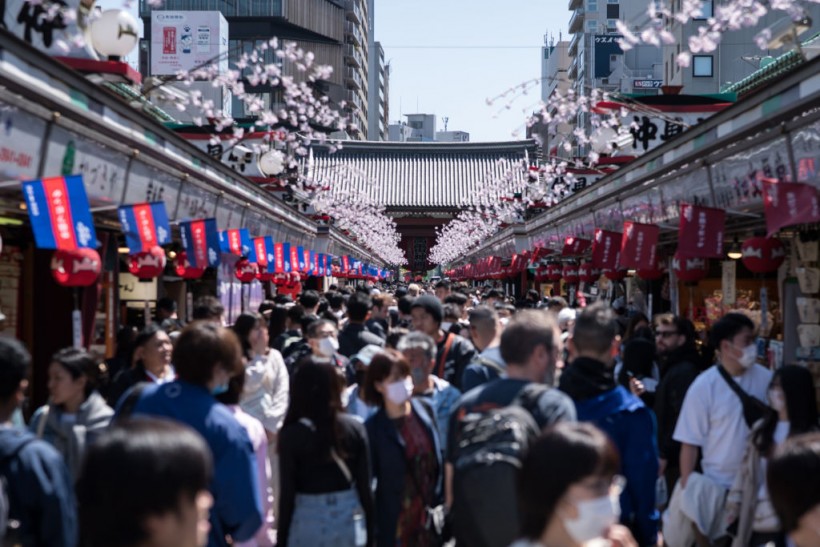Japan's overtourism led to the new entrance tax. The Hiroshima prefecture city of Hatsukaichi introduced this.
Other Japanese islands, such as Taketomi in Okinawa prefecture and Sado in Niigata prefecture, are also considering adopting the newly introduced fee. If you are a tourist who regularly visits Japan, here are the major details you need to know about the new entrance tax.
What Tourists Need to Know About Entrance Tax?

Tourists walk through the Nakamise shopping street after the Shirasagi-no Mai, or White Heron Dance, at the Sensoji Temple on April 09, 2023 in Tokyo, Japan. The parade, which originated in the 8th-12th century in Kyoto, was revived in 1968 to celebrate Tokyo's 100th Anniversary and to wish for peace.
According to Nikkei Asia's latest report, Japan's new entrance tax is expected to be implemented by the Hiroshima prefecture city starting in October. The new tourism fee is expected to secure funds needed to manage the ongoing overtourism in Japan. Currently, massive streams of tourists are still flocking to the Asian country to spend their vacations.
However, overtourism also puts the country's culture and nature of the islands in danger. Japanese officials said the new entrance tax, the "Miyajami Visit Tax," will have exemptions. These include Hatsukaichi's residents, commuters, preschool children, and other students. If you are not among these individuals, you must pay the tax to their fair on ferries.
Specifically, tourists will face a 100 yen fee ($0.67) per person on every visit. But, for regular tourists, the new tax offers an annual payment of 500 yen (more than $3). Japanese authorities expect the Miyajami Visit Tax to generate around 140 million yen (around $940,000) in fiscal 2023 until April 2024. This revenue will be allocated for toilet and park maintenance and free WiFi provision.
Read Also: Japan: Potential Radioactive Scrap Metal From Fukushima Nuclear Plant Stolen, Sold by Contractors
Japan's Worsening Overtourism

Locals protest against "overtourism" and block the road tunnel in the world-renowned sightseeing town of Hallstatt near Gmunden in Upper Austria on August 27, 2023. The placard read: "Visitors limitation, reclaim habitat"; "Radical limits for mass tourism"; "World culture at its end"; "Tourism Yes. Mass tourism No."
CNN reported that the overtourism issue in Japan is getting worse. The latest victim of this tourism problem is Mount Fuji. Veteran ranger Miho Sakurai, who has been patrolling the slopes of Mount Fuji for over seven years now, said that there are too many people in Japan's highest peak.
He added that the number of tourists visiting the mountain is much higher compared to the past few years. In 2023, UNESCO added Mount Fuji to the World Heritage Sites list.
Because of this, UNESCO's advisory organ, ICOMOS (International Council on Monuments and Sites), urged Japanese officials to handle the tourists and local visitors to Mount Fuji effectively.
However, the authorities' efforts were insufficient since the number of visitors to Mount Fuji increased twice between 2012 (2 million) and 2019 (5 million).
With the new entrance tax, Japanese officials hope to decrease the number of tourists visiting Japan's islands and other protected destinations.
Related Article: Japan's Troubled Toshiba To Leave 74-Year Stock Market History After Successful Takeover Bid








